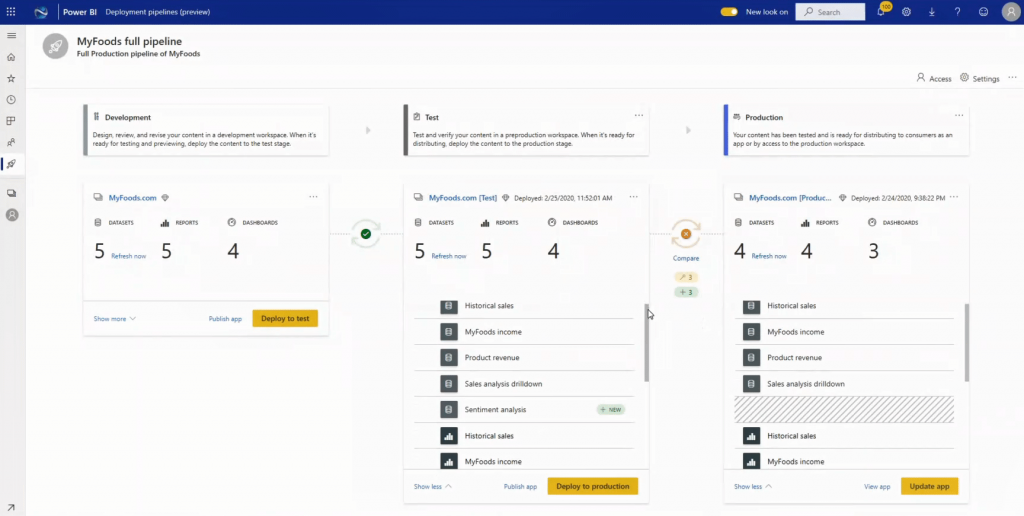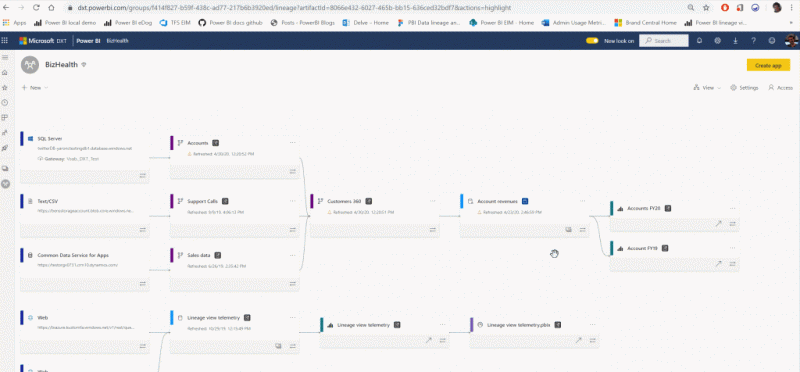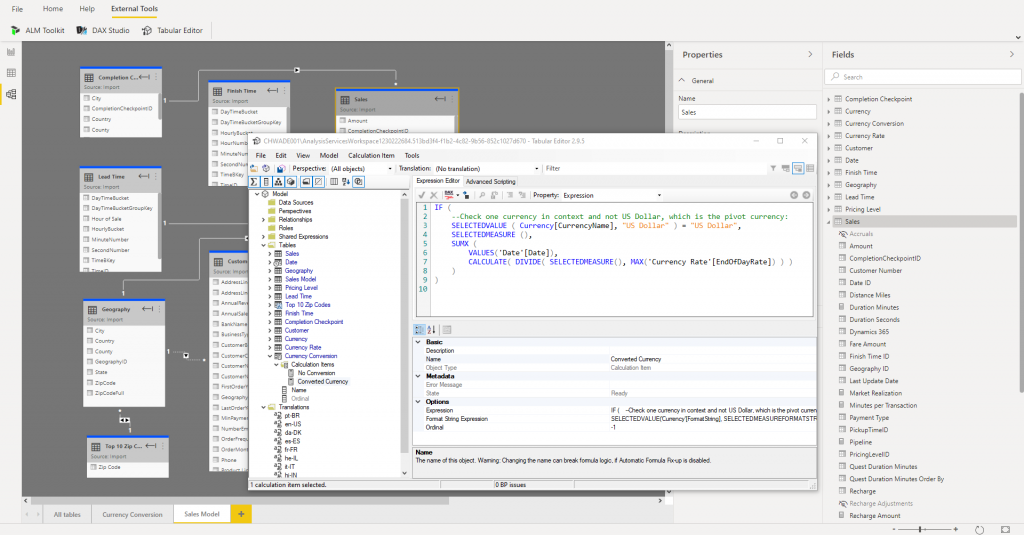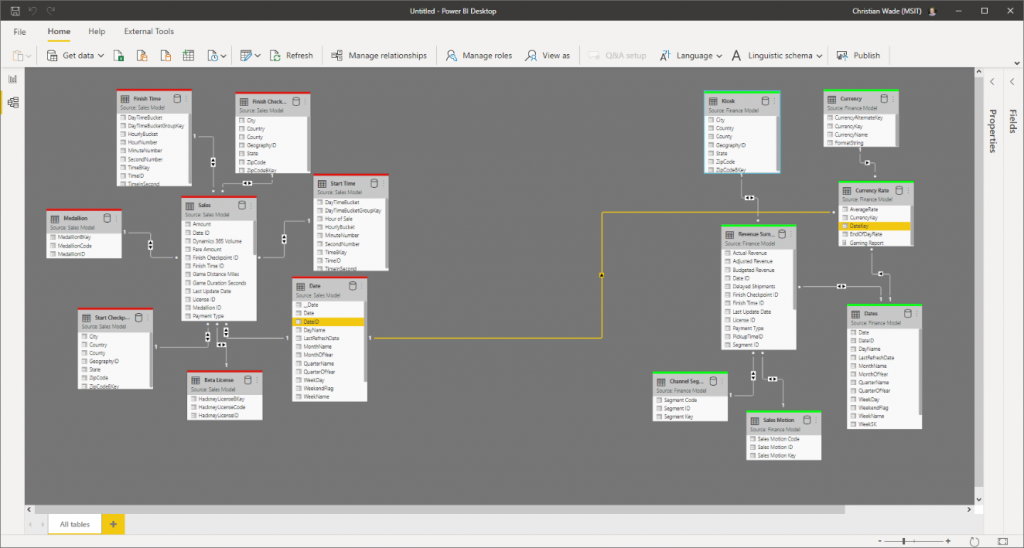Below, you can find a summary of the three new features we are most looking forward to.
1. Deployment Pipelines, Lineage View and Impact Analysis
Anyone who worked with a larger Power BI installation has experienced frustration and faced challenges in connection with publication of content. For example, it can be difficult to keep track of dependencies between artefacts (data sets, reports, dashboards, etc.) in a work area, and how do you keep track of which versions are published for development, test and production?

Deployment Pipelines (see the figure above) is a new function that makes it far easier to administrate the life cycle of your entire Power BI installation. You can appoint three work areas, e.g. development, test and production, after which you can get an overview of the content of each of the three work areas.
The pipeline makes it possible to publish content from development to test and from test to production with a single click. Along the way, you will be informed of the differences between environments, and thanks to another new function, Impact Analysis, it is also possible to receive a summary of the consequences of a publication prior to carrying it out.
In the figure below, you can see the new Lineage View, which graphically illustrates dependencies between different artefacts in a work area – from source to dashboard. From here, it is also possible to send notifications to the users of an artefact as well as all dependent artefacts, e.g. in case of a crash or prior to publication of changes.

In time, Lineage View will be further developed to go deeper and cover even more links in the chain.
2. Integration of 3. parts tools and XMLA read/write
It is no secret that we are happy with Tabular Editor at Kapacity, and apparently, so is Microsoft. In fact, last year they invited our very own Daniel Otykier to Seattle, WA, where he helped the Power BI product group to develop a new Power BI feature that allowed integration with third-party tools like DAX Studio, ALM Toolkit and, of course, Tabular Editor (see the picture below).

When this feature will be released later this year, it will be possible for everyone to use Tabular Editor as a supplement to Power BI Desktop for the development and fine-tuning of the tabular model that is under the hood in Power BI.
Not only does Tabular Editor greatly improve the efficiency of working on large models with many measures, the tool also unlocks new Analysis Services Engine features that could not thus far be used in Power BI Desktop: Calculation Groups, Metadata Translations and Perspektiver are some of the features that Power BI developers have had to go without for a long time.
If you use Power BI Premium or dedicated capacity, you can start using Tabular Editor right now to process your data model, thanks to the XMLA read/write endpoint.
3. Compound models
We’re finally here. The really big announcement this year, and for many years to come. The holy grail within Business Analytics no less!
Compound models now make it possible to establish a live connection from Power BI to a Azure Analysis Services or Power BI Data Set and thus import further data and/or include several live connections in the same Power BI model!
Just let that sink in for a minute. Imagine the possibilities: The IT department’s central cube contains perhaps 90% of the data you need in your day-to-day work, and if you could juuuust get those budget figures from Excel into the model, then everything would be fantastic. But IT says no since the numbers in your Excel sheet are not interesting to most of the business.
This is the first time a reporting tool has ever given the user the option to combine one or more semantic data models with other data sources as needed – while business logic, security, etc. in the original data model are kept completely intact.
This sounds almost like black magic, and it has the potential to completely change the way we think of Business Analytics in large organisations. A true killer feature!

Exciting future
The news above represents just some of the highlights from the Power Platform’s roadmap, which Microsoft is about to deliver. Even though Power BI, as we know it today, is still a relatively young product, we think that the vision in itself – as well as Microsoft’s ability to execute – is solid, and we are not in doubt upon which platform we would rather base Business Analytics going forward.
If you want to learn more about this and other news presented at MBAS, check out Microsoft’s own blog.
